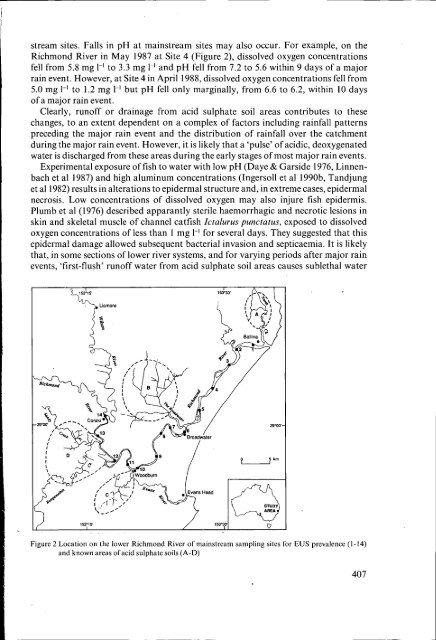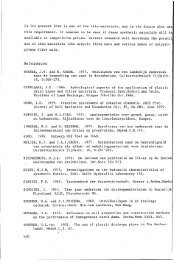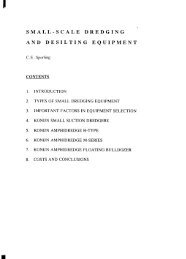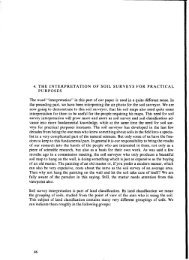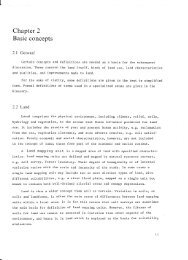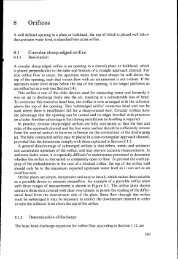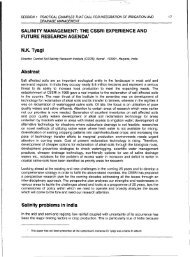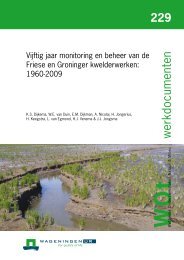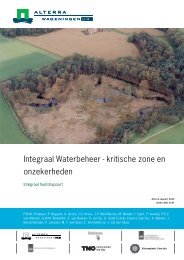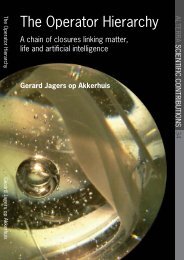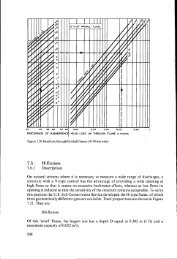Environmental aspects of acid sulphate soils - ROOT of content
Environmental aspects of acid sulphate soils - ROOT of content
Environmental aspects of acid sulphate soils - ROOT of content
You also want an ePaper? Increase the reach of your titles
YUMPU automatically turns print PDFs into web optimized ePapers that Google loves.
stream sites. Falls in pH at mainstream sites may also occur. For example, on theRichmond River in May 1987 at Site 4 (Figure 2), dissolved oxygen concentrationsfell from 5.8 mg I-' to 3.3 mg I-' and pH fell from 7.2 to 5.6 within 9 days <strong>of</strong> a majorrain event. However, at Site 4 in April 1988, dissolved oxygen concentrations fell from5.0 mg 1-' to 1.2 mg I-' but pH fell only marginally, from 6.6 to 6.2, within 10 days<strong>of</strong> a major rain event.Clearly, run<strong>of</strong>f or drainage from <strong>acid</strong> <strong>sulphate</strong> soil areas contributes to thesechanges, to an extent dependent on a complex <strong>of</strong> factors including rainfall patternspreceding the major rain event and the distribution <strong>of</strong> rainfall over the catchmentduring the major rain event. However, it is likely that a 'pulse' <strong>of</strong> <strong>acid</strong>ic, deoxygenatedwater is discharged from these areas during the early stages <strong>of</strong> most major rain events.Experimental exposure <strong>of</strong> fish to water with low pH (Daye & Garside 1976, Linnenbachet al 1987) and high aluminum concentrations (Tngersoll et al 1990b, Tandjunget al 1982) results in alterations to epidermal structure and, in extreme cases, epidermalnecrosis. Low concentrations <strong>of</strong> dissolved oxygen may also injure fish epidermis.Plumb et al (1 976) described apparantly sterile haemorrhagic and necrotic lesions inskin and skeletal muscle <strong>of</strong> channel catfish Ictalurus punctatus, exposed to dissolvedoxygen concentrations <strong>of</strong> less than 1 mg I-' for several days. They suggested that thisepidermal damage allowed subsequent bacterial invasion and septicaemia. It is likelythat, in some sections <strong>of</strong> lower river systems, and for varying periods after major rainevents, 'first-flush' run<strong>of</strong>f water from <strong>acid</strong> <strong>sulphate</strong> soil areas causes sublethal waterFigure 2 Location on the lower Richmond River <strong>of</strong> mainstream sampling sites for EUS prevalence (1-14)and known areas <strong>of</strong> <strong>acid</strong> <strong>sulphate</strong> <strong>soils</strong> (A-D)407


